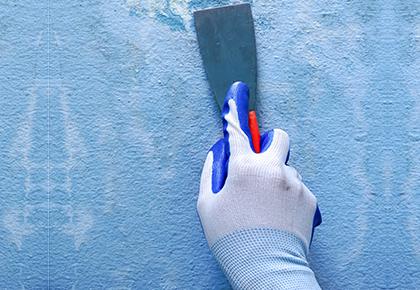Lead Paint Testing Demystified: Methods and Regulations for NYC Homes
Lead paint testing is crucial in protecting residents from the health risks associated with lead vulnerability, especially in densely populated metropolitan cities like New York City. Despite appearances, even seemingly well-maintained homes can harbor lead-based paint, posing risks to occupants, particularly children and pregnant women. This comprehensive guide will give an overview of lead paint testing methods, including surface testing, XRF testing, and laboratory analysis of paint samples. We’ll also delve into the importance of lead paint testing in light of NYC Local Law 31 of 2020 and the specific requirements for XRF testing outlined in this legislation.
Overview of Lead Paint Testing Methods
Surface Testing: Surface testing involves physically collecting samples from painted surfaces, such as walls, ceilings, and trim, and analyzing them for lead content. This method typically utilizes specialized swabs or wipes that change color in the presence of lead. Surface testing is a relatively simple and cost-effective method for identifying lead paint hazards in residential properties.
XRF Testing: XRF (X-ray fluorescence) testing is a non-destructive method that uses handheld devices to analyze the chemical composition of painted surfaces. XRF analyzers emit low-energy X-rays that excite the atoms in the paint, producing characteristic fluorescent X-rays that are detected and analyzed to determine the presence and concentration of lead. XRF testing offers rapid results and is particularly well-suited for large-scale assessments and screening purposes.
Laboratory Analysis of Paint Samples: Laboratory analysis involves collecting paint chip or dust samples from painted surfaces and sending them to accredited laboratories for analysis. This method provides highly accurate results, allowing for precise quantification of lead content in paint layers. Laboratory analysis is typically used for confirmatory testing following initial screening or when more detailed information is needed.
Importance of Lead Paint Testing
Lead paint testing is essential for identifying and mitigating lead hazards in residential properties, even those that appear well-maintained. Here’s why testing for lead paint is crucial:
Health Risks: Lead exposure can have serious health consequences, particularly for children, whose developing bodies are more susceptible to lead poisoning. Even low levels of lead exposure can impair cognitive development, cause learning disabilities, and lead to behavioral problems. Pregnant women and adults can also suffer from adverse health effects, including hypertension and kidney damage, as a result of lead exposure.
Regulatory Compliance: In New York City, lead paint testing is governed by stringent regulations, including Local Law 31 of 2020. This legislation mandates annual lead-based paint inspections and XRF testing in certain residential buildings, specifically those with three or more units built before 1960. Compliance with these regulations is essential for property owners to avoid fines and legal liabilities.
Property Value and Liability: Failure to address lead paint hazards can impact the value of residential properties and expose owners to potential legal liabilities. In real estate transactions, disclosure of lead paint hazards is required by law, and buyers may demand remediation or reduction in property prices to account for the cost of lead hazard control measures.
NYC Local Law 31 of 2020 and XRF Testing
NYC Local Law 31 of 2020 represents a significant step towards protecting residents from lead exposure by strengthening lead paint testing requirements in residential buildings. The law mandates annual lead-based paint inspections and XRF testing in certain dwellings to identify and mitigate lead hazards effectively. Specifically, Local Law 31 requires XRF testing of painted surfaces in all common areas and a random sample of units in applicable buildings.
XRF testing plays a critical role in compliance with NYC Local Law 31 due to its efficiency, accuracy, and non-destructive nature. By utilizing XRF technology, property owners and managers can quickly assess lead hazards in their buildings and take appropriate remedial actions to ensure the safety of occupants.
Conclusion
Lead paint testing is vital to maintaining safe and healthy living environments in New York City. By understanding the different testing methods available, homeowners and property managers can identify lead hazards effectively and take proactive steps to mitigate risks. Compliance with NYC Local Law 31 and the use of XRF testing is essential for ensuring regulatory compliance and protecting residents from the dangers of lead exposure. Remember, when it comes to lead paint, prevention is key, even in homes that may appear well-maintained.



